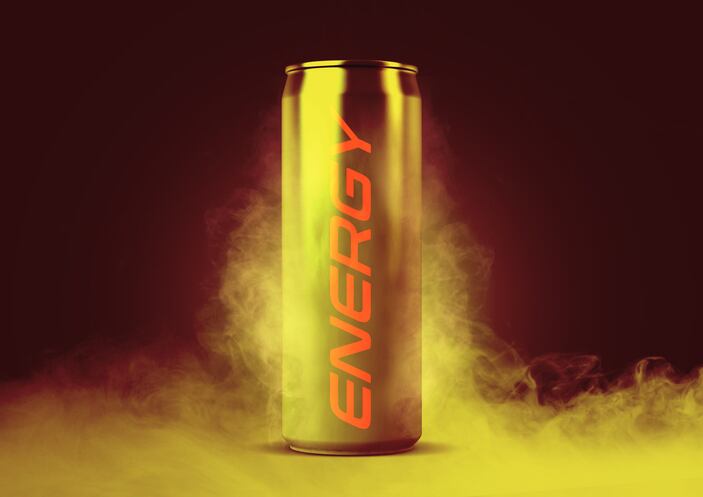The research as published in the latest edition of Mayo Clinical Proceedings. The authors came from the Mayo Clinic system, Texas Tech University and Lindenwood University.
The researchers delved through adverse events associated with energy products and dietary supplements in the period from January 1, 2014, through June 29, 2018. The events were collected by the Center for Food Safety and Applied Nutrition Adverse Event Reporting System (CAERS), which was set up under a rule attached to the Dietary Supplement Health and Education Act (DSHEA).
Homogeneous nature of CAERS data
The CAERS system collects data from a variety of sources. Consumers and health care professionals may voluntarily submit reports. Dietary supplement manufacturers are required by law to collect adverse events and required to forward on to the CAERS system those that fall into the ‘serious’ category. The CAERS system is maintained by FDA’s Center for Food Safety and Nutrition (CFSAN).
As a result, the system has a wide range of data quality, with less than optimal consistency. Subject comorbidities are reported in some cases but not in others. Similarly, precise descriptions of the products involved, including caffeine dosages, are found in some files and are absent in others. Nevertheless, over the years the system has amassed a large body of data, which theoretically could compensate to some degree for the homogeneous nature of the individual reports.
Is there a problem with caffeine?
The authors noted that the database, even with its shortcomings, has been used in the past to identify categories of products that are associated with higher numbers of serious adverse events. In the present study, they used the database to look at this association with what they categorized as “multi-ingredient preworkout supplements (MIPS), energy products (primarily beverages), and weight loss products.”
“The objective of this study was to examine differences in the number and severity of AERs in CFSAN between caffeine-containing products and non caffeine-containing products. A secondary aim was to identify the category of caffeine-containing products associated with the highest number and severity of AERs in the CFSAN database from 2014 to 2018,” the authors wrote.
Conclusion: Caffeine associated with more serious events
The researchers identified 23,269 AERs in the database, of which 2,117 concerned caffeine-containing products. In the caffeine group, 45 deaths (2.1% of the overall number of reports) occurred, 287 ‘life threatening’ events (13.6%) were reported and there were 831 instances of ‘disability or hospitalization’ (39.3%). For those same categories in the 21,152 non-caffeine reports the numbers were: 284 deaths (1.3%), 1,734 life threatening (8.2%) and 6,542 disability or hospitalization (30,9%).
“Results of this study indicate that although AERs for noncaffeinated products are much greater in number than AERs from caffeine-containing products, AERs associated with caffeine-containing products are more likely to be classified as severe AERs relative to nonecaffeine-containing products based on reported data. Furthermore, exposure to pre-workout and weight loss products had greater odds of having a more serious AE than the noncaffeinated products,” the authors concluded.
One of the study’s authors, Chad Kersick, PhD, of Lindenwood University, said he and his coauthors were well aware that there are some big gaps in the CAERS data, but he said it’s the best such data set there is to work with.
Author: Goal is education, not fear mongering
The goal, he said, was to look at how caffeine is really being consumed in the modern market to see if there is any potential cause for concern. Caffeine is of course one of the oldest dietary ingredients on the market and has been consumed as a beverage in the form of the occasional cup of coffee or tea for centuries. As such it has a good record of safety.
But recently the number of use occasions has exploded, with caffeine now added to energy drinks, preworkout supplements and even foods like energy bars. Many of these products do not list caffeine dosages on the label. How much is too much, and how much are consumers actually getting? FDA drew the line a couple of years ago with the advent of pure powdered caffeine being marketed directly to consumers, where is was deemed the risk of actual overdose was too high.
“What we really wanted to do was to get this information into the hands of health care professionals. We don’t want to promote fear mongering with regard to caffeine but when looking at this database we think there could be a certain level of education with consumers about caffeine intake,” Kersick told NutraIngredients-USA.
Adverse events expert: Drawing conclusions from CAERS data is tricky
Rick Kingston, PharmD, is one of the country’s foremost experts on adverse event reports. In addition to being a clinical professor in the School of Pharmacy at the University of Minnesota, where he lectures on the subject, Kingston is also the president of scientific and regulatory affairs at Safety Call International, a consulting firm that helps companies take care of adverse event reporting as well as helping to manage product recall situations. While not necessarily disputing that there could be a safety issue with caffeine dosages piling up from numerous sources, he said it’s difficult to use the CAERS data to bolster that case.
“As mentioned under study limitations one of the biggest challenges in making sense of the data relates to the fact that these spontaneously reported events lack details on dose, serving size, and concomitant medical conditions,” Kingston said.
“As an example, the average caffeinated energy drink has approximately 79 mg of caffeine as compared to about 120-140mg of caffeine in a cup of coffee. Other energy products may have substantially higher doses of caffeine. Without knowing the dose and whether the products were being taken as directed it’s difficult to attribute death to any given product. As for pre-existing medical conditions, consumers that are trying to lose weight and are using energy products may have a plethora of concomitant medical conditions that increase their risk for serious outcomes independent of their use of a caffeinated product,” he added.
“Lastly, there is no denominator in this study to put the reports in perspective. A recently published study involving energy drink exposures reported to Texas regional poison control centers revealed that during a five-year period there were more than 376 billion energy drinks sold yet there were only .58 moderate outcomes (11 incidents) and 0.053 major outcomes (1 incident) per hundred million units sold and no deaths,” Kingston concluded.
CAERS can form first line of defense
Kingston added that even with their limitations, adverse event reports are indeed a critical matter of after market surveillance. The system can be used as an initial trigger, but if a safety signal is detected, more research is urgently necessary to protect consumers.
“If energy products are disproportionately associated with death as compared to other non-caffeinated products it is imperative to determine specifically which products and doses of caffeine are potentially involved,” he said.
Source: Mayo Clinical Proceedings
2020 Aug;95(8):1594-1603. doi: 10.1016/j.mayocp.2020.02.033
Adverse Events Reported to the United States Food and Drug Administration Related to Caffeine-Containing Products
Authors: Jagim AR, et al.




